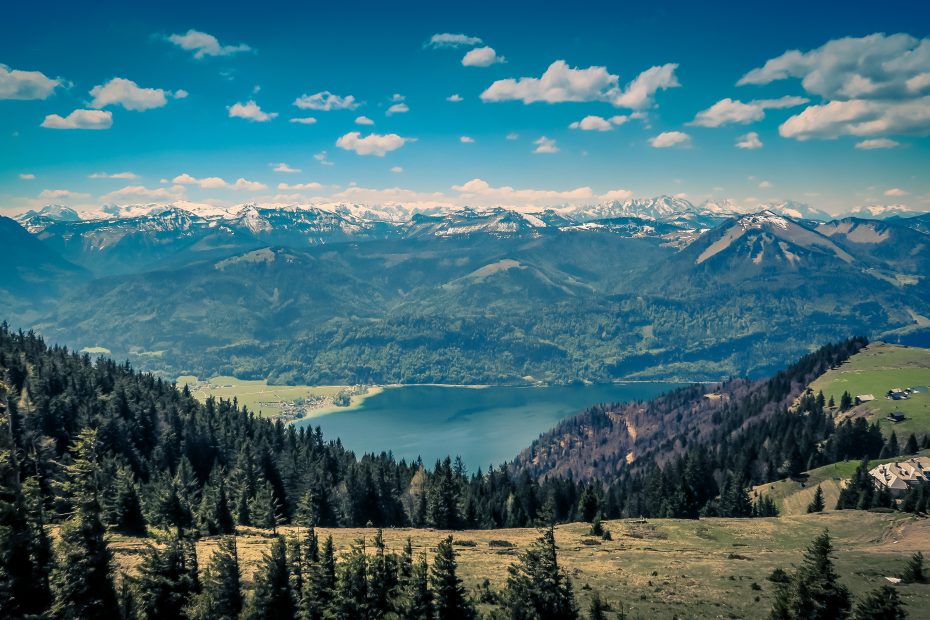Austria has a long and illustrious culinary tradition, with dishes and drinks that reflect the country’s storied past. Many classic Austrian foods have their origins centuries ago, and are still popular today. When visiting Austria, indulging in the local cuisine offers a delicious way to experience authentic culture and flavours. From savoury main dishes to sweet treats, Austria’s food highlights the best of the country’s cooking heritage.
Table of Contents
Iconic Main Dishes Showcase Quality Ingredients
Several classic main dishes form the backbone of traditional Austrian cuisine. These filling meals perfectly showcase the care and quality behind Austria’s food.
Wiener Schnitzel Remains a Star Dish
The iconic Wiener schnitzel is a thin, breaded, pan-fried veal cutlet, and it originated in Vienna in the 19th century. To make it properly, veal cutlets are tenderized, coated in flour, egg, and breadcrumbs, and then fried in butter or oil. This dish is now popular all over the world, but the very best Wiener schnitzel is still found in Austria. It remains a staple menu item, and a must-try for any visitor.
Tafelspitz Highlights Expert Technique
Tafelspitz is another Austrian specialty with a long history. It is made from boiled beef, often the prime cut of tenderloin or rump. The meat is simmered for hours along with vegetables to produce a rich, flavorful broth. Tafelspitz showcases excellent butchery skills and patience required to make the beef perfectly tender. It is traditionally served with slices of the brothy meat, horseradish sauce, roasted potatoes, and vegetable garnishes.
Backhendl Features a Crispy Coating
For another take on classic Austrian meat dishes, try the backhendl, or breaded, fried chicken. Pieces of chicken are coated in flour, egg, and breadcrumbs before frying, similarly to Wiener schnitzel preparation. The result is juicy, tender chicken beneath a crispy golden crust. Backhendl is commonly served for lunch or dinner paired with potato salad.
Traditional Side Dishes Complement the Mains
The Austrians enjoy many classic vegetable accompaniments that complete a traditional meal. These dishes highlight local produce and ingredients.
Potato Salad Pleases Crowds
Cool and creamy potato salad seasoned with vinegar and oil is a fixture at Austrian dinner tables. It can be made with diced potatoes or potato slices, and often includes onions or radish for crunch. Potato salad is the perfect complement to enjoy alongside Wiener schnitzel or backhendl. The tangy creaminess balances the crisp cutlets or chicken.
Kasekrainer Adds Savoury Depth
The kasekrainer sausage is another trademark side dish. It contains small chunks of cheese mixed into the sausage meat before stuffing into a casing and cooking. The cheese melts during cooking, giving the sausage a distinctive savoury flavor. Kasekrainer pairs well with potato salad, sauerkraut, pretzels, and beer.
Save Room for Famous Desserts
Austria enjoys a sweet tooth, and Vienna is particularly renowned for its decadent pastries and cakes. Two desserts stand out as icons of Austrian café culture.
Sachertorte is a Chocolate Masterpiece
The elegant, layered chocolate Sachertorte cake was first created in Vienna in the early 1800s. Recipes vary, but authentic versions involve multiple layers of chocolate sponge cake sandwiched together with apricot jam and enrobed in a glossy chocolate icing. Sachertorte is a beloved special occasion cake with a dedicate following at Vienna’s cafés.
Kaiserschmarrn Features the Fluffiest Pancake
For a delicious dessert with imperial origins, try the unique kaiserschmarrn pancakes. Their name translates as “emperor’s mess.” The pancake batter is baked with raisins, then sliced up and lightly caramelized in butter and sugar. Dust with powdered sugar and serve warm with fruit compotes or jams. Kaiserschmarrn is an indulgent treat loved across Austria.
Coffee and Wine Fuels Culinary Culture
Two quintessential beverages accompany Austria’s cuisine. Both coffeehouse coffee and local wine showcase key parts of the country’s identity.
Viennese Coffee is an Art Form
The Viennese coffeehouse culture dates back centuries, with its own rituals and customs. Locals frequent their regular café daily to read newspapers, socialize, and sip coffee. It is always made with fresh roasted coffee, water, and whipped cream. The melange blend served in delicate cups is a favorite. Austria takes pride in its coffee service and preparations.
Wine Produced Regionally Pairs Locally
Austria has several prominent wine regions that produce world-class bottles. The terraced vineyards of the Wachau Valley along the Danube are particularly known for excellent Rieslings and Grüner Veltliners. Ideal with food, Austrian wines nicely complement the national dishes. Look for local wine suggestions on menus when dining. Prost!
Exploring Austria Through Its Cuisine
Austrian cuisine is a wonderful blend of quality ingredients, storied dishes, and appreciation for preparing food well. Staples like schnitzel, goulash, sausages, and sweet treats reflect the traditions and tastes treasured by locals. Visitors seeking an authentic cultural experience would do well to sample Austria’s food heritage. The cuisine provides delicious insight into the country’s roots and continued commitment to living well.
Frequently Asked Questions
What are some iconic Viennese foods?
Some of the most famous foods associated with Vienna are Wiener schnitzel, Sachertorte chocolate cake, kaiserschmarrn pancakes, and Melange coffeehouse coffee.
Which ingredients are key in Austrian cooking?
Classical Austrian dishes tend to use ingredients like veal, beef, chicken, potatoes, cabbage, dairy, eggs, flour, and spices like caraway and paprika.
What is a traditional Austrian breakfast?
A classic Austrian breakfast consists of breads/pastries, cured meats and cheeses, eggs, grain cereals like muesli, and coffee or tea.
What should I try drinking in Austria?
In addition to Vienna-style coffeehouse coffee, be sure to try Austrian wines (especially Riesling or Grüner Veltliner), beer, and schnapps fruit brandies.
Where can I sample authentic Austrian food?
For the best genuine Austrian cuisine, head to restaurants in Vienna, local beer gardens or taverns, coffeehouses serving traditional pastries, and wineries offering food pairings.
